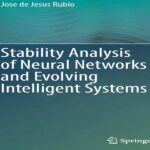- عنوان کتاب: A Multipolar Universe
- نویسنده: Christos Tsagas · Leandros Perivolaropoulos
- حوزه: جهان چندقطبی
- سال انتشار: 2025
- تعداد صفحه: 284
- زبان اصلی: انگلیسی
- نوع فایل: pdf
- حجم فایل: 7.07 مگابایت
در طول چند سال گذشته، گزارشهای مکرری از ناهمسانگردیهای دوقطبی در مشاهدات کیهانشناسی مختلف و در تضاد مستقیم با مدل کیهانشناسی استاندارد (CDM) وجود داشته است. این ادعاها شامل ناهمسانگردیهای دوقطبی در پارامترهای کلیدی کیهانشناسی، مانند هابل و پارامتر کاهش سرعت، و همچنین در تعداد منابع اخترفیزیکی دور، مانند اختروشها، میشود. با توجه به این گزارشها، سوال نوظهور این است که آیا مشاهدات مرتبط، نوعی ناهمسانگردی عمومی اساسی از جهانی که در آن زندگی میکنیم را منعکس میکنند، آیا آنها افزودههای نسبتاً دیرهنگام هستند که به طور خاص توسط فرآیند مداوم تشکیل ساختار ایجاد شدهاند، یا اینکه صرفاً مصنوعات تفسیر نادرست ما از دادهها هستند. هدف از این اقدامات، بررسی مسائل ذکر شده در بالا، چه از دیدگاه مشاهدهای و چه از دیدگاه نظری، برای بررسی توضیحات احتمالی و بحث در مورد پیامدهای بالقوه آنها برای آینده تحقیقات کیهانشناسی است. برای مثال، اگر دوقطبیهای گزارششده، نشانههایی از ناهمسانگردی فضازمان واقعی باشند، ممکن است لازم باشد که بهطور جدی الگوی کیهانشناسی فعلی خود و شاید حتی اعتبار اصل کیهانشناسی و خود مدلهای فریدمن را مورد بازنگری قرار دهیم. از سوی دیگر، با فرض اینکه ناهمسانگردیهای دوقطبی مذکور ناشی از تفسیر نادرست ما از دادههای کیهانشناسی هستند، احتمالاً باید سناریوهای خود را در مورد تشکیل ساختار در مقیاس بزرگ و تاریخ کیهان در اواخر زمان بررسی کنیم. هر دو گزینه، پیامدهای عمیقی دارند که میتوانند برای درک ما از ماهیت و تکامل جهانی که در آن زندگی میکنیم، محوری باشند. این کتاب، رویکردی پیشرفته به برخی از جذابترین چالشهای کیهانشناسی مدرن ارائه میدهد. این امر از طریق مجموعهای جامع و مکمل از فصلهای مرتبط حاصل میشود که چارچوبهای نظری را با شواهد رصدی پیوند میدهند و دیدگاههای تازهای در مورد مسائلی مانند شتاب جهانی، انرژی تاریک، همسانگردی کیهانی و تشکیل ساختار ارائه میدهند. این مجموعه مقالات برای مخاطبان گستردهای از محققانی که در کیهانشناسی نظری و رصدی کار میکنند، با سطوح تجربه و تخصص از محققان ارشد گرفته تا دانشجویان تحصیلات تکمیلی، جذاب است. دانشجویان کارشناسی ارشد، با علاقه به کیهانشناسی، نیز باید بتوانند اکثر فصلها را دنبال کرده و درک کنند. همین امر در مورد اخترفیزیکدانان و فیزیکدانانی که تخصص دیگری غیر از کیهانشناسی دارند نیز صادق است.
Over the last few years there have been repeated reports of dipolar anisotropies in a variety of cosmological observations and in direct conflict with the standard ( CDM) cosmological model. These claims include dipolar anisotropies in key cosmological parameters, such as the Hubble and the deceleration parameter, as well as in the number counts of distant astrophysical sources, like quasars for example. In view of these reports, the emerging question is whether the associated observations reflect some underlying generic anisotropy of the universe we live in, whether they are relatively late-time additions, triggered by the ongoing process of structure formation in particular, or whether they are mere artefacts of our gross misinterpretation of the data. The aim of these proceedings is to review the above mentioned issues, both from the observational and from the theoretical point of view, to consider possible explanations and to discuss their potential implications for the future of cosmological research. For instance, if the reported dipoles are signatures of real spacetime anisotropy, we might need to seriously reconsider our current cosmological paradigm and perhaps even the validity of the cosmological principle and of the Friedmann models themselves. On the other hand, assuming that the aforementioned dipolar anisotropies are due to our misinterpretation of the cosmological data, we should probably need to review our scenarios of large-scale structure formation and the late-time history of the cosmos. Both alternatives carry profound implications that could prove pivotal for our understanding of the nature and the evolution of the universe we live in. The volume in hand provides a cutting-edge approach to some of modern cosmology’s most intriguing challenges. This is achieved by means of a comprehensive and complementary collection of contributing chapters, which bridge theoretical frameworks with observational evidence, offering fresh perspectives on issues such as the universal acceleration, dark energy, cosmic isotropy and structure formation. The proceedings appeal to a broad audience of researchers working in both theoretical and observational cosmology, with experience and expertise levels ranging from that of senior researchers to those of postgraduate students. Advanced undergraduates, with interests in cosmology, should also be able to follow and appreciate the majority of the chapters. The same is also true for astrophysicists and physicists with expertise other than cosmology.
این کتاب را میتوانید از لینک زیر بصورت رایگان دانلود کنید:
Download: A Multipolar Universe



































نظرات کاربران